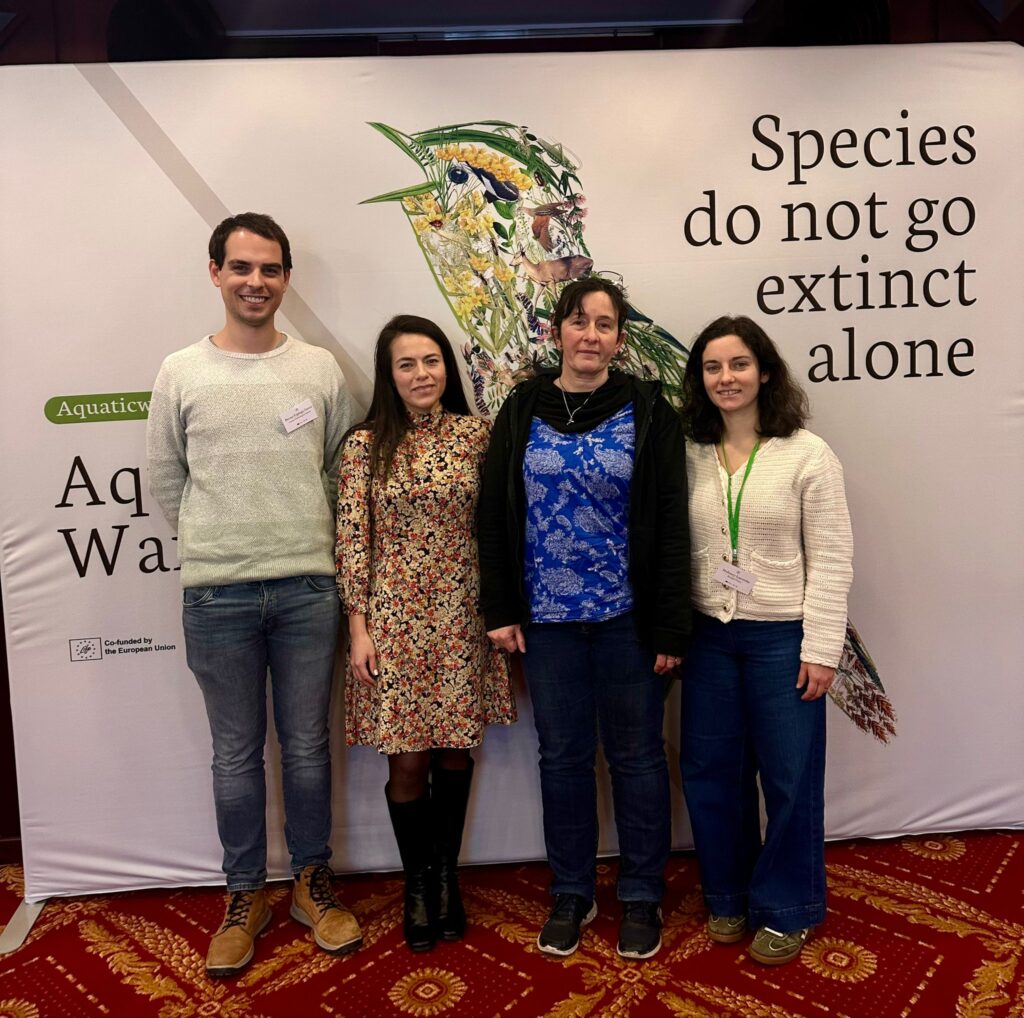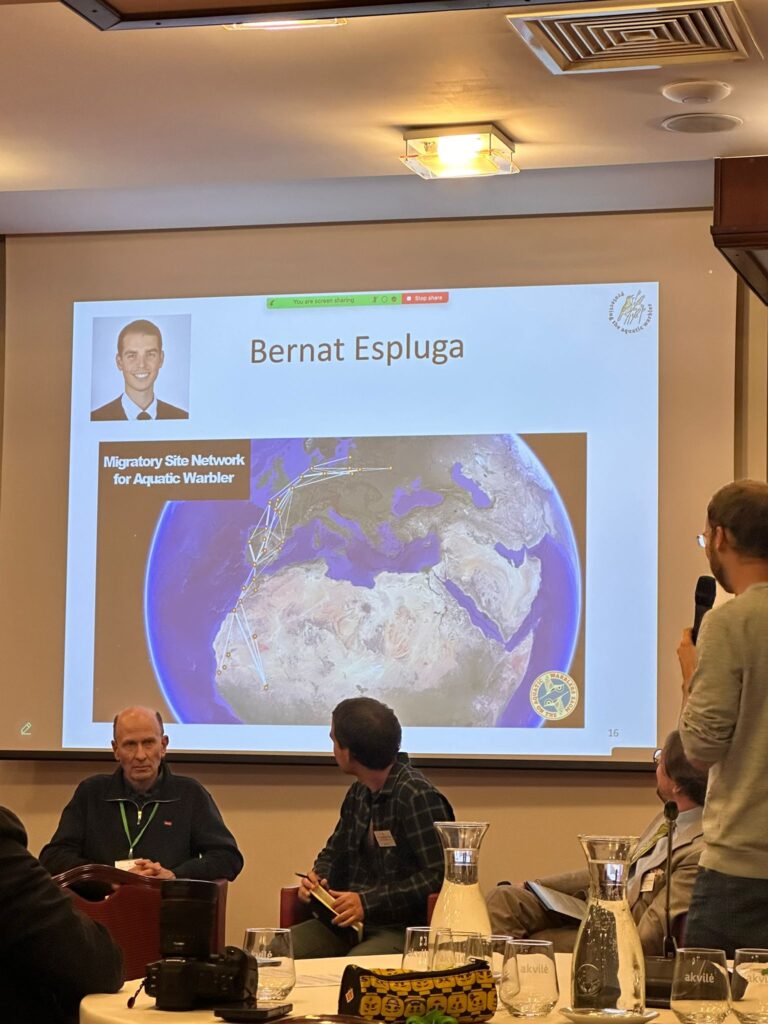
LIFE AWOM in Vilnius: uniting efforts to save Aquatic Warblers
-
AWOM
-
Biodiversity - Flyways
Is there a better way to exchange the latest information about the globally threatened Aquatic Warbler species than an international conference among bird experts? Organised by the Baltic Environmental Forum, the International Conference on Aquatic Warbler Conservation was held in Vilnius, Lithuania from 12 to 14 November 2025. Participants, including our LIFE AWOM project representatives, shared current data regarding the population status of the Aquatic Warbler, ongoing conservation strategies and challenges. All with the common goal: put all effort possible to save this threaten species.
Aside from productive and insightful discussions, this three-day conference was also a great opportunity for anyone working in protecting the Aquatic Warbler – continental Europe’s rarest migratory songbird – to stimulate stronger cooperation and introduce new conservation initiatives. One of the thematic headlines presented at the conference was titled “Key ongoing initiatives for the conservation of the Aquatic Warbler – main achievements, ongoing and planned future actions.” This is where Valeria Numbela, our LIFE AWOM project manager, provided an overview of the project’s objectives, expected results, and activities that have taken place to-date.

The audience was composed by conservation specialists, NGOs, scientists, representatives from protected area administrations, and competent authorities. Since the LIFE AWOM project is in the first year of implementation, Valeria Numbela’s presentation highlighted the main results achieved so far:
- Three gap filling surveys on Aquatic Warblers: two in Morocco (spring and autumn 2025) and one in Mauritania (autumn 2025);
- Habitat restoration actions led in Belgium, France, Spain and Senegal, on sites where Aquatic Warblers rest during their migration;
- LIFE AWOM Project branding and communication activities;
- Successful completion of pilot experiment for telemetry actions, aiming to geolocate some birds.
Additionally, representatives from the French project partner Bretagne Vivante (Christine Blaize and Mallaury Lacombe) provided insights on Aquatic Warbler conservation efforts in France, and how the French species action plan (SAP) is a complementary tool to some actions within LIFE AWOM. Given that Bretagne Vivante leads the LIFE AWOM project part on Monitoring and Evaluation, their input on issues like food availability assessments provided useful contributions to the discussions.
Last, but not least, Bernat Espluga from the LIFE AWOM project partner Institut Catala D’Ornitologia, who leads the Site Network activities, participated in the panel discussion, “Strategic planning for Aquatic Warbler conservation – opportunities and challenges of designing a steppingstone network of Aquatic Warbler breeding habitats”. The main outcome of this session was supported by all panelists and participants: developing a science-driven, comprehensive, coherent, and climate resilient stepping-stone network that includes protected breeding, migration and wintering sites is essential for the conservation of the Aquatic Warbler and its habitats.

Looking beyond the conference
After these three days, the work has been laid out for all the Aquatic Warbler ‘family members’ – as Žymantas Morkvėnas from the Baltic Environmental Forum likes to say.
The conservation and protection of Aquatic Warblers breeding sites is essential. Now, with the launch of the LIFE AWOM project, the first multi-national initiative dedicated to the Aquatic Warbler’ staging and wintering sites, the enthusiasm among participants was evident. Although current population figures for the Aquatic Warblers are bleak, the combined efforts of the LIFE4AquaticWarbler and LIFE AWOM projects offer a much-needed sense of hope.
It was also the closing conference of the LIFE MagniDucatusAcrola project, an initiative implemented across Lithuania, Belarus, Poland and Germany (2015 – 2025). After 10 years of regional collaboration for the long-term conservation of the Aquatic Warbler, this project also offers key lessons for current and future cross-border conservation actions.
This international conference was not only an opportunity to exchange knowledge and experience; it also underscored the urgent need for coordinated international action to save the Aquatic Warbler and carry forward this vital conservation mission.
